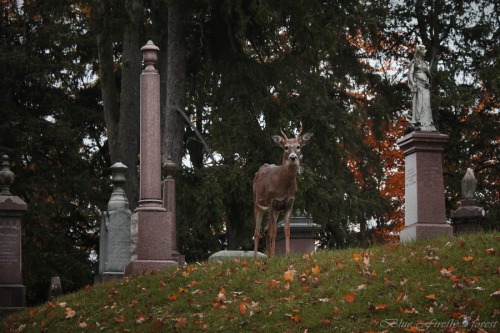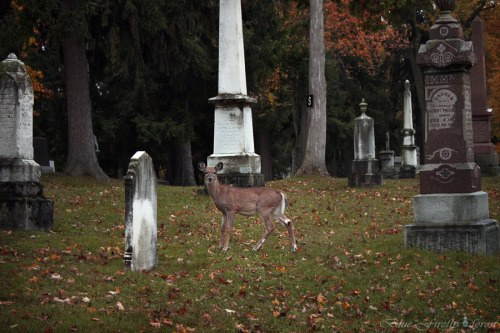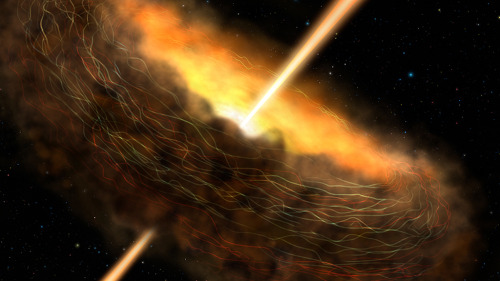Monstrous-mind - The Monster Mind

More Posts from Monstrous-mind and Others







Asperitas and Mammatus
Well-defined, wave-like structures in the underside of the cloud; more chaotic and with less horizontal organization than the variety undulatus. Asperitas is characterized by localized waves in the cloud base, either smooth or dappled with smaller features, sometimes descending into sharp points, as if viewing a roughened sea surface from below. Varying levels of illumination and thickness of the cloud can lead to dramatic visual effects.
Occurs mostly with Stratocumulus and Altocumulus
Mammatus is a cellular pattern of pouches hanging underneath the base of a cloud, typically cumulonimbus rainclouds, although they may be attached to other classes of parent clouds.
source | source | images: x, x, x, x, x, x, x


🍂🍁🍂🍁🌇





Flower of the Dead, essence of Aztec Marigold. Always loved October and November, The colors and essence of autumn.
Everything You Need to Know About the Aug. 21 Eclipse
On Aug. 21, all of North America will experience a solar eclipse.

If skies are clear, eclipse-watchers will be able to see a partial solar eclipse over several hours, and some people – within the narrow path of totality – will see a total solar eclipse for a few moments.
How to Watch
It’s never safe to look at the Sun, and an eclipse is no exception. During a partial eclipse (or on any regular day) you must use special solar filters or an indirect viewing method to watch the Sun.

If you have solar viewing glasses, check to make sure they’re safe and undamaged before using them to look at the Sun. Make sure you put them on before looking up at the Sun, and look away before removing them. Eclipse glasses can be used over your regular eyeglasses, but they should never be used when looking through telescopes, binoculars, camera viewfinders, or any other optical device.
If you don’t have eclipse glasses, you can still watch the eclipse indirectly! You can make a pinhole projector out of a box, or use any other object with tiny holes – like a piece of cardstock with a hole, or your outstretched, interlaced fingers – to project an image of the partially eclipsed Sun onto the ground.

Of course, if it’s cloudy (or you’d just rather stay inside), you can watch the whole thing online with us at nasa.gov/eclipselive. Tune in starting at noon ET.
If you’re in the path of totality, there will be a few brief moments when it is safe to look directly at the eclipse. Only once the Moon has completely covered the Sun and there is no light shining through is it safe to look at the eclipse. Make sure you put your eclipse glasses back on or return to indirect viewing before the first flash of sunlight appears around the Moon’s edge.

Why do eclipses happen?
A solar eclipse happens when the Moon passes directly between the Sun and Earth, casting its shadow down on Earth’s surface. The path of totality – where the Moon completely covers the Sun – is traced out by the Moon’s inner shadow, the umbra. People within the Moon’s outer shadow, the penumbra, can see a partial eclipse.

The Moon’s orbit around Earth is tilted by about five degrees, meaning that its shadow usually doesn’t fall on Earth. Only when the Moon lines up exactly between the Sun and Earth do we see an eclipse.

Though the Sun is about 400 times wider than the Moon, it is also about 400 times farther away, making their apparent sizes match up almost exactly. This is what allows the Moon to block out the Sun’s bright face, while revealing the comparatively faint, pearly-white corona.
The Science of Eclipses
Eclipses are a beautiful sight to see, and they’re also helpful for our scientists, so we’re funding eleven ground-based science investigations to learn more about the Sun and Earth.

Total solar eclipses reveal the innermost regions of the Sun’s atmosphere, the corona. Though it’s thought to house the processes that kick-start much of the space weather that can influence Earth, as well as heating the whole corona to extraordinarily high temperatures, we can’t study this region at any other time. This is because coronagraphs – the instruments we use to study the Sun’s atmosphere by creating artificial eclipses – must cover up much of the corona, as well as the Sun’s face in order to produce clear images.

Eclipses also give us the chance to study Earth’s atmosphere under uncommon conditions: the sudden loss of solar radiation from within the Moon’s shadow. We’ll be studying the responses of both Earth’s ionosphere – the region of charged particles in the upper atmosphere – and the lower atmosphere.
Learn all about the Aug. 21 eclipse at eclipse2017.nasa.gov, and follow @NASASun on Twitter and NASA Sun Science on Facebook for more. Watch the eclipse through the eyes of NASA at nasa.gov/eclipselive starting at 12 PM ET on Aug. 21.
Make sure to follow us on Tumblr for your regular dose of space: http://nasa.tumblr.com
🎃🎃🎃🎃🌄🍁🍂









🐈🍁🍂🐾

🛫🔭🌌
10 Amazing Space Discoveries by the World’s Largest Flying Observatory

On the night of May 26, 2010, the Stratospheric Observatory for Infrared Astronomy, or SOFIA, the world’s largest flying observatory, first peered into the cosmos. Its mission: to study celestial objects and astronomical phenomena with infrared light. Many objects in space emit almost all their energy at infrared wavelengths. Often, they are invisible when observed in ordinary, visible light. Over the last decade, the aircraft’s 106-inch telescope has been used to study black holes, planets, galaxies, star-forming nebulas and more! The observations have led to major breakthroughs in astronomy, revolutionizing our understanding of the solar system and beyond. To celebrate its 10 years of exploration, here’s a look at the top 10 discoveries made by our telescope on a plane:
The Universe’s First Type of Molecule

Scientists believe that around 100,000 years after the big bang, helium and hydrogen combined to make a molecule called helium hydride. Its recent discovery confirms a key part of our basic understanding of the early universe.
A New View of the Milky Way

More than a pretty picture, this panorama of cosmic scale reveals details that can help explain how massive stars are born and what’s feeding our Milky Way galaxy’s supermassive black hole.
When Planets Collide

A double-star system that is more than 300 light-years away likely had an extreme collision between two of its rocky planets. A similar event in our own solar system may have formed our Moon.
How A Black Hole Feasts

Fear not, the dark, my friend. And let the feast begin! Magnetic fields in the Cygnus A galaxy are trapping material where it is close enough to be devoured by a hungry black hole.
Somewhere Like Home

The planetary system around Epsilon Eridani, a star located about 10 light-years away, has an architecture remarkably similar to our solar system. What’s more, its central star is a younger, fainter version of our Sun.
A Quiet Place

Black holes in many galaxies are actively consuming material, but our Milky Way galaxy’s central black hole is relatively quiet. Observations show magnetic fields may be directing material around, not into, the belly of the beast.
The Great Escape

Ever wonder how material leaves a galaxy? The wind flowing from the center of the Cigar Galaxy is so strong it’s pulling a magnetic field — and the mass of 50 to 60 million Suns — with it.
Exploding Star, New Worlds

What happens when a star goes boom? It turns out that supernova explosions can produce a substantial amount of material from which planets like Earth can form.
Stellar Sibling Rivalry

They say siblings need time and space to grow, but here’s one that really needs some room. A newborn star in the Orion Nebula is clearing a bubble of space around it, preventing any new luminous family members from forming nearby.
Clues to Life’s Building Blocks

Radiation from stars is making organic molecules in nebula NGC 7023, also known as the Iris Nebula, larger and more complex. The growth of these molecules is one of the steps that could lead to the emergence of life under the right circumstances.
SOFIA is a modified Boeing 747SP aircraft that allows astronomers to study the solar system and beyond in ways that are not possible with ground-based telescopes. Find out more about the mission at www.nasa.gov/SOFIA.
Make sure to follow us on Tumblr for your regular dose of space: http://nasa.tumblr.com
-
 bi-hans liked this · 11 months ago
bi-hans liked this · 11 months ago -
 kotolunokystys liked this · 2 years ago
kotolunokystys liked this · 2 years ago -
 thousandsights reblogged this · 2 years ago
thousandsights reblogged this · 2 years ago -
 thousandsights liked this · 2 years ago
thousandsights liked this · 2 years ago -
 crossdresserica liked this · 2 years ago
crossdresserica liked this · 2 years ago -
 telmomato liked this · 2 years ago
telmomato liked this · 2 years ago -
 mina1126 reblogged this · 2 years ago
mina1126 reblogged this · 2 years ago -
 mina1126 liked this · 2 years ago
mina1126 liked this · 2 years ago -
 ventureroftheunknown reblogged this · 2 years ago
ventureroftheunknown reblogged this · 2 years ago -
 jmh18fencer liked this · 2 years ago
jmh18fencer liked this · 2 years ago -
 kerovousphoto liked this · 2 years ago
kerovousphoto liked this · 2 years ago -
 kojiarakiartworks liked this · 2 years ago
kojiarakiartworks liked this · 2 years ago -
 rockstermon liked this · 2 years ago
rockstermon liked this · 2 years ago -
 rsphotostuff liked this · 2 years ago
rsphotostuff liked this · 2 years ago -
 helmund liked this · 2 years ago
helmund liked this · 2 years ago -
 ventureroftheunknown liked this · 2 years ago
ventureroftheunknown liked this · 2 years ago -
 cuddlesnmonsters liked this · 2 years ago
cuddlesnmonsters liked this · 2 years ago -
 ivebeensetonfire liked this · 2 years ago
ivebeensetonfire liked this · 2 years ago -
 the-smiling-wolf liked this · 2 years ago
the-smiling-wolf liked this · 2 years ago -
 aslan-leviathan liked this · 2 years ago
aslan-leviathan liked this · 2 years ago -
 cloudysketches liked this · 2 years ago
cloudysketches liked this · 2 years ago -
 analog-machine liked this · 2 years ago
analog-machine liked this · 2 years ago -
 alwaysscorpion reblogged this · 2 years ago
alwaysscorpion reblogged this · 2 years ago -
 thorgal67 liked this · 2 years ago
thorgal67 liked this · 2 years ago -
 0riginal-sharing reblogged this · 2 years ago
0riginal-sharing reblogged this · 2 years ago -
 0riginal-sharing liked this · 2 years ago
0riginal-sharing liked this · 2 years ago -
 wolfdragon333 reblogged this · 2 years ago
wolfdragon333 reblogged this · 2 years ago -
 wolfdragon333 liked this · 2 years ago
wolfdragon333 liked this · 2 years ago -
 dullhare liked this · 2 years ago
dullhare liked this · 2 years ago -
 6reat-photos reblogged this · 2 years ago
6reat-photos reblogged this · 2 years ago -
 0pen-visual liked this · 2 years ago
0pen-visual liked this · 2 years ago -
 jimjamsinspiration reblogged this · 4 years ago
jimjamsinspiration reblogged this · 4 years ago -
 blackwidow1891 liked this · 4 years ago
blackwidow1891 liked this · 4 years ago -
 here-be-misfit liked this · 6 years ago
here-be-misfit liked this · 6 years ago -
 breakingaway reblogged this · 6 years ago
breakingaway reblogged this · 6 years ago -
 breakingaway liked this · 6 years ago
breakingaway liked this · 6 years ago -
 yourgothmom reblogged this · 6 years ago
yourgothmom reblogged this · 6 years ago
My ambition is handicapped by laziness. -C. Bukowski Me gustan las personas desesperadas con mentes rotas y destinos rotos. Están llenos de sorpresas y explosiones. -C. Bukowski. I love cats. Born in the early 80's, raised in the 90's. I like Nature, Autumn, books, landscapes, cold days, cloudy Windy days, space, Science, Paleontology, Biology, Astronomy, History, Social Sciences, Drawing, spending the night watching at the stars, Rick & Morty. I'm a lazy ass.
222 posts